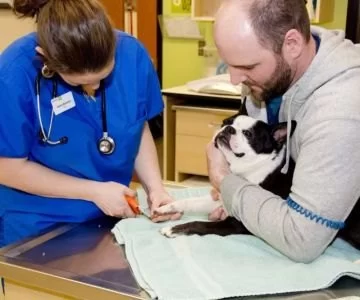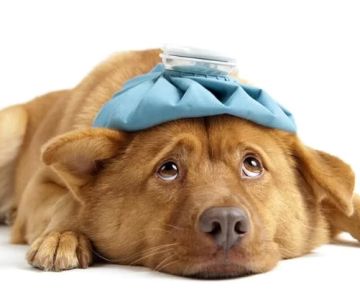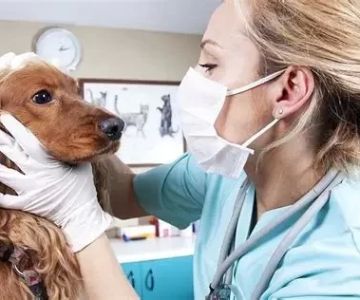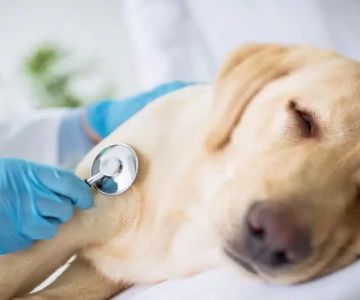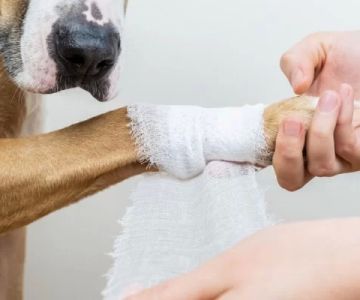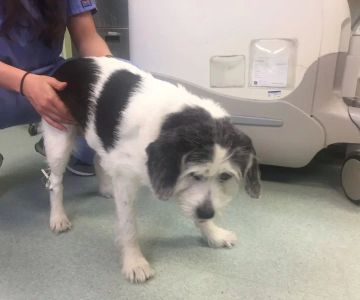- 1 - Recognizing Different Types of Pet Injuries
- 2 - Handling Minor Cuts and Scratches
- 3 - Controlling Bleeding in an Injured Pet
- 4 - How to Respond to Pet Fractures
- 5 - Real-Life Case: A Puppy’s Accidental Cut
- 6 - Preventing Injury and Preparing a First Aid Kit
- 7 - When to Seek Professional Help
- 8 - How Hidden Brook Veterinary Can Support You
Recognizing Different Types of Pet Injuries
Accidents happen, even in the safest homes. Understanding the different types of pet injuries — from cuts and bleeding to fractures — helps you respond quickly and calmly. Whether your dog scraped its paw on a sharp rock or your cat fell from a counter, quick action can make a huge difference in recovery.
Minor injuries, like small scratches, can often be managed at home. However, deep wounds, heavy bleeding, or possible fractures require more attention. The key is to stay composed, observe your pet’s behavior, and act decisively.
Handling Minor Cuts and Scratches
1. Clean the Wound Gently
Start by trimming any fur around the injury to prevent contamination. Rinse the area with lukewarm water or a pet-safe saline solution to remove dirt or debris. Avoid using alcohol or hydrogen peroxide, as they can damage tissue and delay healing.
2. Apply a Pet-Safe Antiseptic
Use a vet-approved antiseptic or iodine-based solution to disinfect the wound. Apply it gently using a sterile gauze pad. For shallow cuts, this may be enough to promote healing within a few days.
3. Bandage the Wound
If the wound is in an area where your pet might lick it, cover it with a sterile bandage. Ensure it’s snug but not too tight, and change it daily. Keep your pet from scratching or chewing the area using an Elizabethan collar if needed.
Controlling Bleeding in an Injured Pet
1. Apply Direct Pressure
When bleeding occurs, the first step is to apply firm, direct pressure with a clean cloth or gauze pad. Hold it for several minutes without checking too soon, as this can interrupt clotting.
2. Elevate if Possible
If the injury is on a limb, gently elevate it above the level of the heart to slow blood flow. Do not attempt this if you suspect a fracture, as it may worsen the injury.
3. Use a Temporary Bandage
For moderate bleeding, wrap the wound with a clean bandage and apply light pressure. Check every 10–15 minutes. If bleeding doesn’t slow down after 15 minutes, it’s time to contact a veterinarian immediately.
Severe bleeding from large cuts or deep punctures requires professional medical attention. Even if you manage to stop the bleeding temporarily, hidden damage like muscle or nerve injury can cause complications later.
How to Respond to Pet Fractures
1. Recognize the Signs
Fractures can be obvious — like visible bone deformity — or subtle, such as limping, swelling, or your pet refusing to bear weight on a leg. Never assume it’s just a sprain without a proper examination.
2. Minimize Movement
Keep your pet as still as possible. Movement can worsen the break or cause additional pain. Gently place your pet on a firm surface, like a wooden board or a large towel, to create makeshift support.
3. Do Not Try to Set the Bone
Resist the urge to realign or manipulate the limb yourself. Improper handling can lead to more damage. Instead, wrap the area loosely with a clean towel or bandage to limit movement until a vet can assess it.
Real-Life Case: A Puppy’s Accidental Cut
Take the story of Max, a playful golden retriever puppy who ran through a patch of broken glass in his backyard. His paw began to bleed immediately, and his owner panicked. However, she quickly rinsed the wound with saline, applied pressure, and bandaged the area before heading to the vet.
Because she acted quickly, Max didn’t lose much blood and avoided infection. Her preparedness made a major difference. This story highlights how basic pet first aid knowledge can save lives before professional care becomes available.
Preventing Injury and Preparing a First Aid Kit
1. Pet-Proof Your Home
Prevention is always better than treatment. Keep sharp objects, cleaning supplies, and choking hazards out of reach. Regularly inspect your yard or walking routes for potential dangers.
2. Build a Pet First Aid Kit
Every pet owner should have a dedicated kit with essentials such as gauze, adhesive tape, antiseptic wipes, saline solution, tweezers, scissors, and emergency vet contact information. Store it in an accessible location, ideally near your pet’s carrier.
3. Stay Educated
Consider taking a basic pet first aid course. Knowing how to react in the first few minutes after an injury can be the difference between a quick recovery and a serious complication.
When to Seek Professional Help
While home care is suitable for minor injuries, you should seek professional help if:
- The wound is deep, large, or heavily bleeding.
- You suspect a fracture or dislocation.
- Your pet shows signs of shock — pale gums, rapid heartbeat, or weakness.
- There are signs of infection, like swelling, pus, or foul odor.
- Your pet’s pain seems unmanageable, even after first aid.
Quick intervention from a veterinary professional prevents complications and speeds up recovery. Never delay seeking help if you’re uncertain — it’s always safer to have your pet evaluated.
How Hidden Brook Veterinary Can Support You
At Hidden Brook Veterinary, we understand that emergencies can happen at any time. Our expert team provides compassionate, immediate care for all kinds of pet injuries — from cuts and bleeding to fractures and more. We also offer guidance on home first aid techniques so you can respond confidently before professional help arrives.
With the right knowledge, tools, and veterinary support, you can protect your furry family members and ensure their safety in any situation. Hidden Brook Veterinary is here to help you every step of the way — because your pet’s health is always our top priority.

